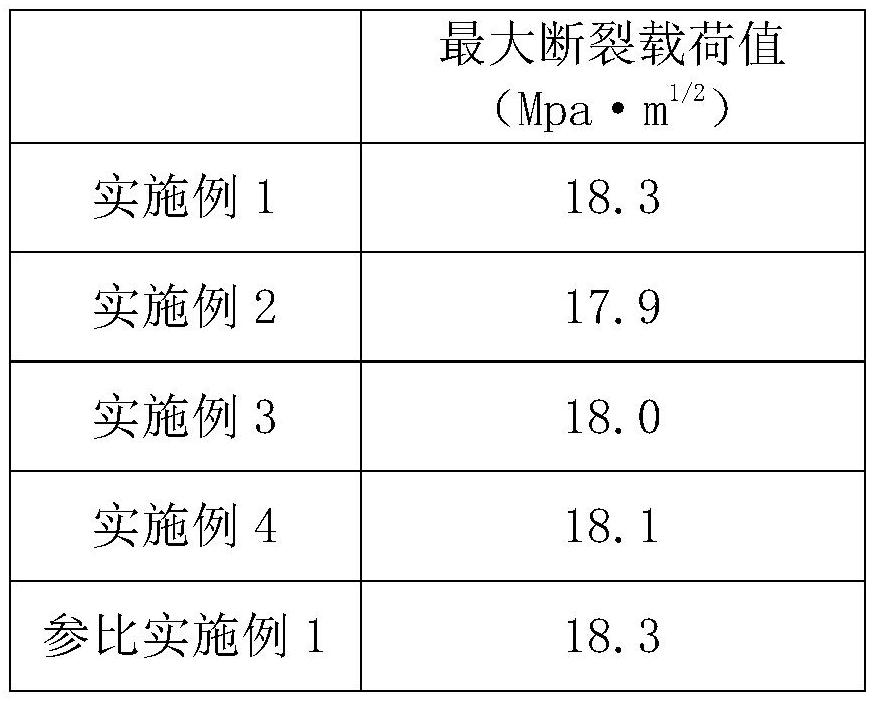Hard alloy surface boronizing method
A cemented carbide and boronizing technology, applied in metal material coating process, coating, solid-state diffusion coating, etc., can solve the problems of poor boronizing effect, etc. The effect of improving the flexural strength
- Summary
- Abstract
- Description
- Claims
- Application Information
AI Technical Summary
Problems solved by technology
Method used
Image
Examples
Embodiment 1
[0021] A method for boronizing a cemented carbide surface, comprising the following steps:
[0022] (1) Sandblasting the cemented carbide to remove the oxide layer on the surface of the cemented carbide;
[0023] (2) Bake the graphite boat at 100°C for 1 hour to remove moisture, pour the boronizing agent into the graphite boat, embed the cemented carbide treated in step (1) in the boronizing agent, and then seal the boronizing container And put it into a box-type resistance furnace; the boronizing agent is composed of the following components by weight percentage: boron supplying agent 14%, activator 26%, and the balance is filler, wherein, the boron supplying agent is made of equal weight nitriding Composed of boron and boron carbide, the activator is composed of equal weight of potassium fluoroborate and pyrrolidinium tetrafluoroborate, and the filler is silicon carbide;
[0024] (3) Vacuumize the box-type resistance furnace until the vacuum degree is 100Pa, fill in nitroge...
Embodiment 2
[0028] A method for boronizing a cemented carbide surface, comprising the following steps:
[0029] (1) Sandblasting the cemented carbide to remove the oxide layer on the surface of the cemented carbide;
[0030] (2) Bake the graphite boat at 100°C for 1 hour to remove moisture, pour the boronizing agent into the graphite boat, embed the cemented carbide treated in step (1) in the boronizing agent, and then seal the boronizing container and put it into a box-type resistance furnace; the boronizing agent is composed of the following components by weight percentage: 10% boron supply agent, 30% activator, and the balance is filler, wherein, the boron supply agent is made of equal weight nitriding Composed of boron and boron carbide, the activator is composed of equal weight of potassium fluoroborate and pyrrolidinium tetrafluoroborate, and the filler is silicon carbide;
[0031] (3) Vacuumize the box-type resistance furnace until the vacuum degree is 100Pa, fill in nitrogen unti...
Embodiment 3
[0034] A method for boronizing a cemented carbide surface, comprising the following steps:
[0035] (1) Sandblasting the cemented carbide to remove the oxide layer on the surface of the cemented carbide;
[0036] (2) Bake the graphite boat at 100°C for 1 hour to remove moisture, pour the boronizing agent into the graphite boat, embed the cemented carbide treated in step (1) in the boronizing agent, and then seal the boronizing container and put it into a box-type resistance furnace; the boronizing agent is composed of the following components by weight percentage: 15% boron supply agent, 25% activator, and the balance is filler, wherein, the boron supply agent is made of equal weight nitriding Composed of boron and boron carbide, the activator is composed of equal weight of potassium fluoroborate and pyrrolidinium tetrafluoroborate, and the filler is silicon carbide;
[0037] (3) Vacuumize the box-type resistance furnace until the vacuum degree is 100Pa, fill in nitrogen unti...
PUM
 Login to View More
Login to View More Abstract
Description
Claims
Application Information
 Login to View More
Login to View More - R&D
- Intellectual Property
- Life Sciences
- Materials
- Tech Scout
- Unparalleled Data Quality
- Higher Quality Content
- 60% Fewer Hallucinations
Browse by: Latest US Patents, China's latest patents, Technical Efficacy Thesaurus, Application Domain, Technology Topic, Popular Technical Reports.
© 2025 PatSnap. All rights reserved.Legal|Privacy policy|Modern Slavery Act Transparency Statement|Sitemap|About US| Contact US: help@patsnap.com



